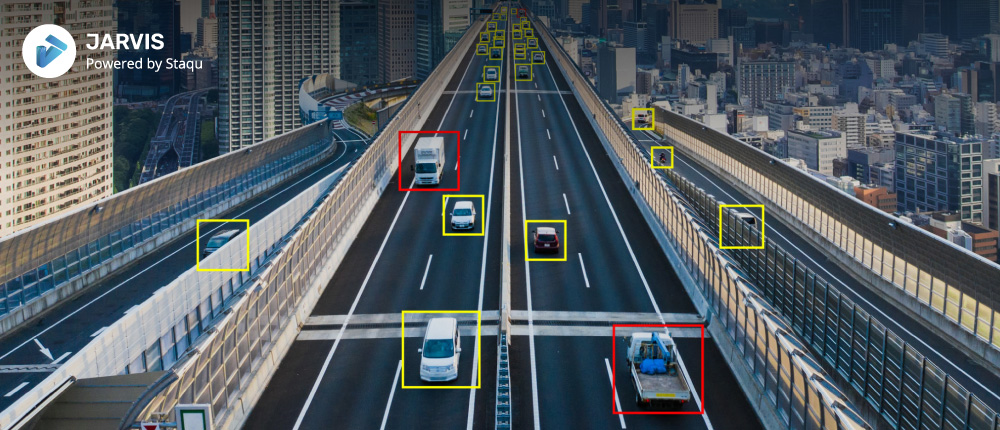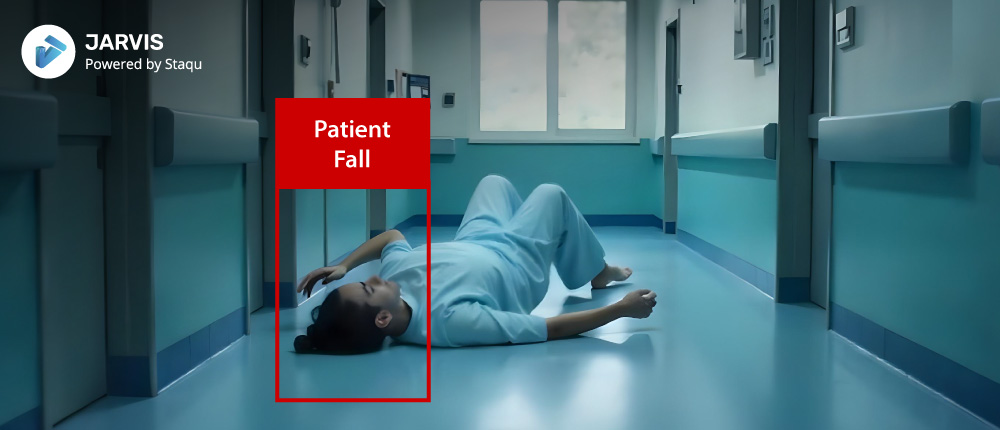What is Real-Time AI Video Analytics?

In today’s digital age, businesses across industries are looking for ways to enhance their operations, security, and decision-making processes. One of the most revolutionary tools in this endeavor is Real-Time AI Video Analytics, a technology that merges the power of artificial intelligence (AI) with video surveillance systems. Real-time AI video analytics analyzes video footage in the moment, detecting patterns, anomalies, and events as they happen. This enables organizations to react immediately, prevent potential issues, and gain valuable insights for future actions.
This blog delves into what real-time AI video analytics is, how it works, its key features, benefits, and real-world applications, and its potential to transform industries.
Understanding Real-Time AI Video Analytics
Real-Time AI Video Analytics refers to the use of artificial intelligence to automatically analyze video feeds as they are captured. Traditional video surveillance systems record footage that must be manually reviewed later, which is time-consuming and often misses critical details. In contrast, real-time AI-powered systems continuously scan the video in real-time, identifying and reacting to events instantly. These AI systems are capable of detecting objects, faces, and behaviors, recognizing patterns, and triggering alerts if unusual or suspicious activity is detected.
With real-time AI video analytics, industries such as retail, healthcare, manufacturing, and security can use the technology to enhance efficiency, optimize security, and improve decision-making by automating the interpretation of video data.
How Does Real-Time AI Video Analytics Work?
At its core, real-time AI video analytics is built on several key components that allow it to function seamlessly:
- Video Capture: High-resolution video cameras capture footage of a particular area or event. These cameras may be part of a CCTV video analytics system or integrated with other IoT devices.
- AI Algorithms: The captured video is fed into an AI system, where it is analyzed in real-time using deep learning and machine learning algorithms. These algorithms are trained to recognize specific objects, behaviors, or patterns based on the data they have been fed.
- Pattern Recognition: The AI system uses pattern recognition to detect pre-determined events. For example, it can identify if a customer is loitering in a retail store, if a person has crossed a restricted boundary, or if there is a crowd forming in a public space.
- Real-Time Alerts: If the system identifies an anomaly or unusual activity, it triggers real-time alerts, sending notifications to security teams, staff members, or relevant personnel. These alerts can help businesses react swiftly, preventing potential issues or addressing them before they escalate.
- Data Storage and Analysis: Along with real-time monitoring, the system also stores the video data, enabling businesses to perform historical analysis. This is useful for identifying long-term trends, training AI models, and improving decision-making processes.
Key Features of Real-Time AI Video Analytics
The power of real-time AI video analytics lies in its advanced features, which provide unparalleled insights and control over video footage.
1. Real-Time Object Detection and Tracking
One of the main features of AI video analytics is its ability to detect and track objects in real-time. Whether it’s identifying people, vehicles, or specific objects, the system provides instant feedback and insights. This capability is crucial for security video analytics in high-risk environments like airports, manufacturing plants, or shopping malls.
2. Facial Recognition
AI-driven video analytics can recognize and differentiate between faces, making it useful for security, access control, and customer identification in retail. It can also track known individuals, monitor crowd behavior, and detect intruders in restricted areas.
3. Behavioral Analysis
The system can identify specific behavioral patterns, such as a person lingering for too long in a restricted area or engaging in suspicious activities. It analyzes these behaviors and triggers alerts for immediate action.
4. Real-Time Alerts and Notifications
The biggest advantage of real-time AI video analytics is its instant response capability. By sending real-time alerts, businesses can quickly address security threats, operational inefficiencies, or abnormal behavior. This proactive approach significantly reduces response times, preventing major incidents or losses.
5. Customizable Dashboards and Reports
Real-time AI video analytics solutions come with customizable dashboards, allowing businesses to visualize critical data points, track metrics, and generate reports. These dashboards offer detailed insights into various operations, helping businesses optimize performance and make data-driven decisions.
6. Integration with Existing Systems
AI video analytics can be seamlessly integrated into existing CCTV video analytics systems or other security infrastructures. This means businesses don’t need to overhaul their entire system to benefit from the power of AI.

Download eguide
Benefits of Real-Time AI Video Analytics
The growing adoption of real-time AI video analytics is largely due to the numerous benefits it offers across various industries.
1. Enhanced Security
By detecting and responding to threats in real-time, AI video analytics dramatically improves security in public spaces, corporate offices, and industrial facilities. Its ability to identify unauthorized access, suspicious behavior, or unattended objects enhances safety and reduces the risk of theft, vandalism, or violence.
2. Operational Efficiency
AI video analytics not only improves security but also helps businesses optimize their day-to-day operations. In retail, for example, retail video analytics solutions can analyze customer movement, monitor checkout queues, and optimize staff deployment. In manufacturing, it can track worker activity, ensure safety protocols are followed, and optimize equipment usage.
3. Improved Decision-Making
By providing real-time insights and historical data analysis, AI video analytics enables businesses to make better-informed decisions. Whether it’s identifying long-term customer trends, improving security protocols, or optimizing store layouts, the data generated by these systems leads to smarter business strategies.
4. Cost Savings
Automating video monitoring reduces the need for large security teams and minimizes the time spent manually reviewing footage. AI video analytics solutions streamline processes and allow businesses to allocate resources more efficiently, leading to significant cost savings.
5. Scalability
One of the key advantages of AI video analytics is its scalability. As businesses grow, they can easily scale their AI systems by adding more cameras, integrating new features, or expanding the geographical coverage of their video surveillance.
Use Cases of Real-Time AI Video Analytics
Real-time AI video analytics is being implemented across multiple sectors, each benefiting from its unique capabilities.
1. Retail
Retail video analytics is transforming the way businesses understand customer behavior. AI video analytics can track customer foot traffic, analyze shopping patterns, and optimize store layouts. It also helps retailers prevent theft and manage in-store security through real-time monitoring and alerts.
- Foot Traffic Analysis: Understand customer movement and optimize product placement.
- Loss Prevention: Detect suspicious activities and reduce theft with AI-powered alerts.
- Checkout Optimization: Monitor checkout lines and allocate staff more efficiently to reduce wait times.
2. Healthcare
Healthcare AI video analytics is used to ensure patient safety and improve operational efficiency. It can monitor patients in real-time, detect falls or medical emergencies, and alert staff to take immediate action. Additionally, it helps track staff movements and ensures compliance with hospital protocols.
- Patient Monitoring: Real-time alerts for falls, patient distress, or unauthorized access.
- Staff Efficiency: Track staff movements to ensure proper patient care and protocol adherence.
3. Manufacturing
AI video analytics is a game-changer in manufacturing. It enhances workplace safety by monitoring worker activity and detecting potential hazards. It also helps optimize operations by tracking inventory and ensuring equipment is functioning properly.
- Workplace Safety: Detect unsafe worker behavior and ensure safety protocols are followed.
- Inventory Management: Track inventory in real-time and optimize warehouse operations.
4. Public Spaces
Smart cities and public spaces are adopting AI video analytics to enhance security and manage crowds. It helps detect suspicious activity, monitor crowd density, and provide real-time alerts to law enforcement or security teams.
- Crowd Management: Monitor large gatherings and detect overcrowding or suspicious behavior.
- Traffic Monitoring: Analyze traffic patterns, detect congestion, and ensure smooth flow of vehicles.
The Future of Real-Time AI Video Analytics
The future of AI video analytics is incredibly promising. With advancements in AI and machine learning, video analytics will become even more precise and efficient. The integration of predictive analytics will allow businesses to anticipate future events based on historical data, enabling them to make proactive decisions.
Additionally, the Internet of Things (IoT) will further enhance AI video analytics by providing more data points and improving connectivity between devices. This will lead to more comprehensive monitoring solutions and greater insights into various operations.
Conclusion
Real-time AI video analytics is transforming industries by providing real-time insights that improve security, enhance operations, and drive smarter decision-making. Whether it’s retail, healthcare, manufacturing, or public safety, AI video analytics offers a powerful solution that automates surveillance, detects anomalies, and delivers actionable insights. As AI technology continues to evolve, Technology will play an increasingly critical role in shaping the future of business operations and security management.
By adopting AI video analytics solutions, businesses can stay ahead of the competition, optimize their processes, and ensure that they are prepared for the challenges of tomorrow.



